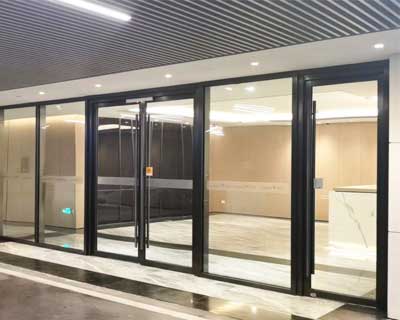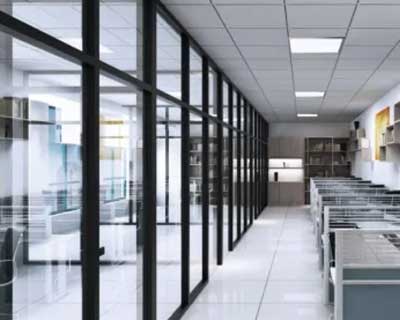Fireproof glass classification
According to Article 4.1 of “Safety Glass for Building Use Part 1: Fireproof Glass” GB15763.1-2009, it is classified as follows:
According to the structure, it can be divided into: composite fireproof glass (FFB) and single piece fireproof glass (DFB).
It can be divided into heat-insulating type (Class A) and non-heat-insulating type (Class C) according to the fire resistance performance.
According to the fire resistance limit, it can be divided into 5 levels: 0.5h, 1.00h, 1.50h, 2.00h, 3.00h.
Fire-resistant performance of fireproof glass
Insulating fireproof glass (Class A) – fire-resistant glass whose fire-resistant performance meets the requirements of fire-resistant integrity and fire-resistant heat insulation at the same time.
Non-insulating fire-resistant glass (Class C) – fire-resistant glass whose fire-resistant performance only meets the requirement of fire-resistant integrity.
Fire-resistant integrity – under the standard fire-resistant test conditions, when the glass component is subjected to fire on one side, it can prevent the flame and heat from penetrating within a certain period of time, or the ability of flame appearing on the back-fire side.
Fire resistance and heat insulation – in the standard fire resistance test conditions, glass components when one side of the fire, can be in a certain period of time so that the temperature of the back fire surface does not exceed the specified value of the ability.
Fire resistance limit – in the standard fire test conditions, the glass component from the action of the fire, to the loss of integrity or thermal insulation type requirements of the end of the time.
Composite Fire-Resistant Glass
Laminated fire-resistant glass laminated fire-resistant glass – by two or more than two layers of glass composite or by a layer of glass and organic materials composite, and to meet the corresponding fire resistance requirements of special glass.
Laminated fire-resistant glass (good fire resistance)
It is made of two or more layers of glass and one or more layers of water-soluble inorganic fireproof adhesive.
Principle of fireproofing: When fire occurs, the glass to the fire surface will explode soon after encountering high temperature, and its fireproof adhesive interlayer will foam and expand ten times or so successively, forming hard milky-white foam fireproof adhesive plate, effectively blocking the flame and isolating the high temperature and hazardous gases. The finished products can be edged, perforated and cut to size.
When applied to external windows and curtain walls, the design program should consider the combination of fireproof glass and PVB laminated glass. Scope of application: fireproof doors and windows of building rooms, corridors and passages, and fireproof partition walls of fireproof partitions and important parts.
Infused fireproof glass (good heat insulation performance)
It consists of two layers of glass (three layers of glass can also be used for special needs), surrounded by special flame retardant adhesive tape sealing, and filled with fireproof glue in the middle, which will become transparent jelly and bond with the glass as a whole after curing.
Principle of fireproofing: After encountering high temperature, the transparent jelly-like fireproof adhesive layer in the middle of the glass will rapidly harden and form an opaque fireproof heat insulation board. While preventing the flame from spreading, it also prevents the high temperature from conducting to the back fire surface. This kind of fireproof glass not only has fireproof and heat insulation performance, but also has outstanding sound insulation effect. It can be processed into curved shape.
It is suitable for fireproof doors and windows, building patio, atrium, shared space, computer room fire partition partition wall.
Chemical grouted fireproof glass, besides being prone to air bubbles during the production process, quickly turns milky white under ultraviolet irradiation and flame, losing the basic function of glass permeability, thus making it impossible to observe the fire situation!


